Which of NC’s 6 historic working lighthouses will be open for climbing this year? A guide
If you’ve ever walked the beach at Cape Hatteras National Seashore at night and seen the stars spread like glitter on a black velvet sky, imagine how much darker it must look to seafarers trying to navigate North Carolina’s irregular coastline miles offshore.
Beginning in the late 1700s, the federal and state governments installed some two dozen lighthouses along the North Carolina coast to help mariners navigate the treacherous shoreline in the dark.
Electronic navigation and other tools have made much of their work nearly obsolete, but a half-dozen shining sentinels remain, appealing as much now to landlubbers as to seamen.
Each year, vacationers flock to the structures in hopes of climbing to the top for a view that, in some ways, is the same as it was a century or more ago.
But anything constantly exposed to salt, water, wind and public use eventually needs repair, and two lighthouses are getting some work done this year, meaning they won’t be open for climbing. A third hasn’t been open to climbing since the last keeper left in the 1950s.
Here’s an update on which N.C. lighthouses are open to the public and whether visitors will be allowed to ascend their swirling staircases in the summer of 2024.
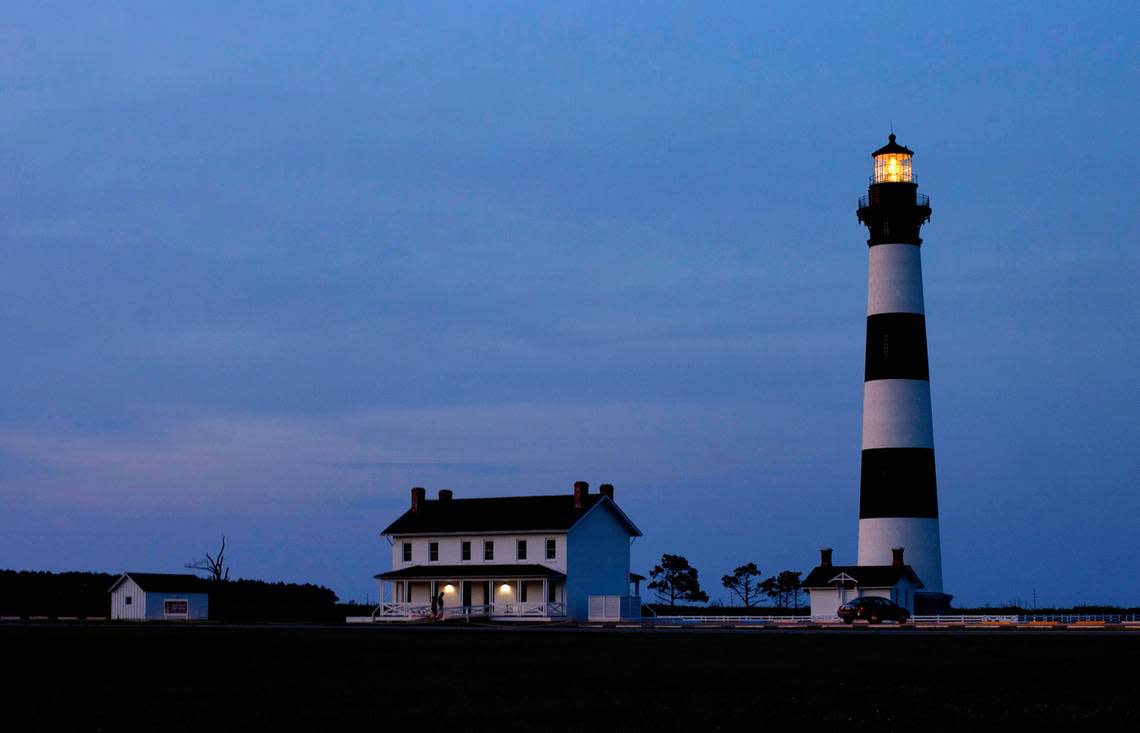
Bodie Island Light Station
▪ Open for climbing when the season begins April 19, closes in October
▪ Address: 8210 Bodie Island Lighthouse Road, Nags Head, NC 27959
Pronounced “Body,” this is actually the third iteration of this lighthouse. The first, built on shifting sand, listed to one side and had to be demolished. The second was destroyed by departing Confederate troops to keep Union forces from using it as a lookout during the Civil War.
This brick tower, painted in horizontal black and white stripes, was built in 1872 on the Roanoke Sound side of Hatteras Island and reaches 156 feet into the air. It’s between the town of Nags Head and Oregon Inlet, within the Cape Hatteras National Seashore, and has been open seasonally for a self-guided climbs since a four-year renovation was completed in 2013.
The lighthouse has its original first-order Fresnel lens. There are more than 200 steps to the top, so look at the guidelines on who should try to make the climb.
Tickets, which cost $5 to $10, are required to climb Bodie Island Lighthouse and must be purchased online from www.recreation.gov after 7 a.m. on the day you plan to go.
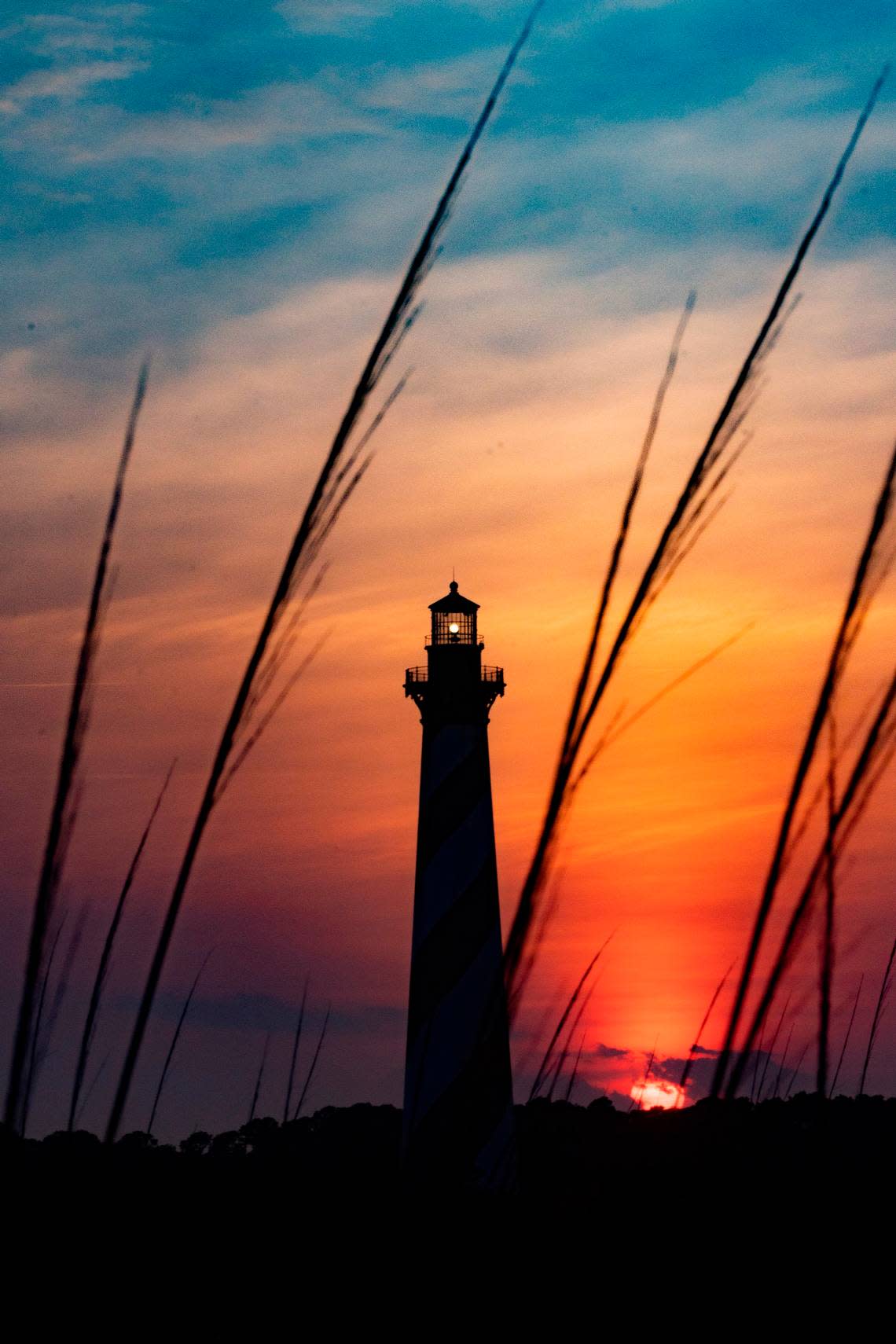

Cape Hatteras Light Station
▪ Closed for climbing until summer 2026, but the two-story Museum of the Sea and onsite gift shop are open 9 a.m. to 5 p.m. and rangers will continue to conduct programs at the site.
▪ Address: 46379 Lighthouse Road, Buxton, NC 27920
At 150 feet and the tallest traditional lighthouse in the U.S., the diagonally striped Cape Hatteras Light offers guidance along Diamond Shoals, one of the most hazardous sections of the Atlantic Coast. The Cape Hatteras Light is also notable for having been moved along with its keepers quarters and other structures in 1999 to keep it from falling into the advancing ocean.
Normally, the National Park Service says, more than half a million people visit the lighthouse each year and about 1,500 climb it each day from April to October.
This year, however, the National Park Service has begun a restoration project expected to take about 18 months to include: replacing the beacon with a replica of a first-order Fresnel lens; stripping and repainting the inside and outside of the lighthouse; restoring the corroded iron work on the tower and the fence around it; restoring ornamental features such as window pediments that were stripped off through the years; and expanding walkways and improving interpretive materials.
Meanwhile, check out this virtual lighthouse tour.
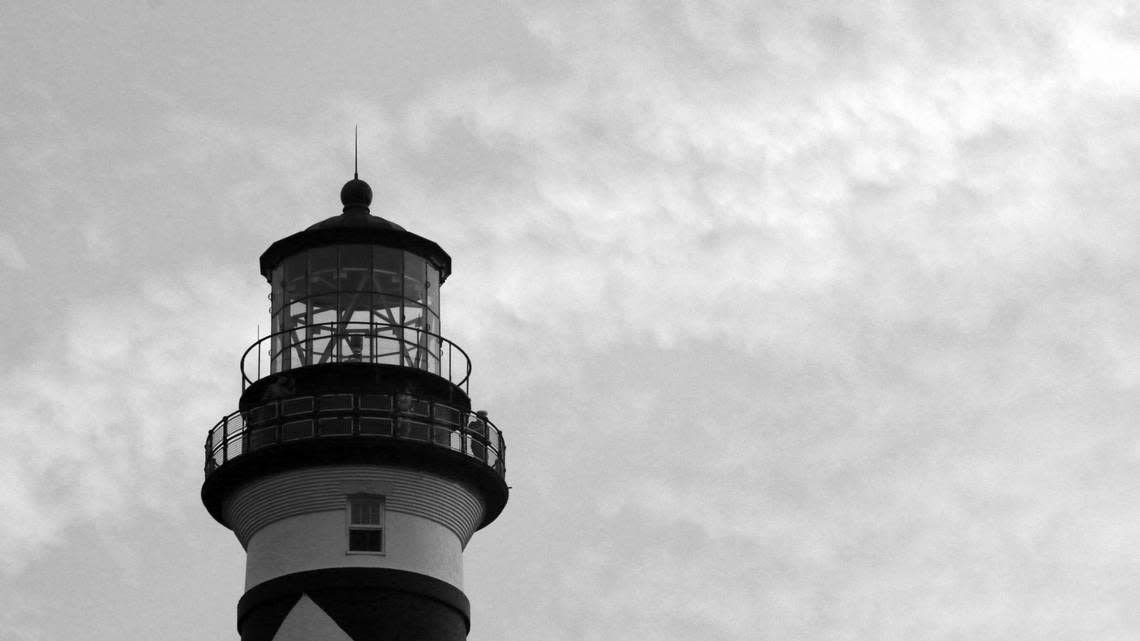
Cape Lookout Light Station
▪ Closed for climbing until summer 2026 or 2027. Core Banks, the string of Carteret County islands on whose southern tip the lighthouse has stood since 1859, remain open to visitors.
▪ Address: Cape Lookout. Reachable only by Island Express ferry service from Harkers Island or Beaufort, or by personal motorboat, kayak or canoe.
In 2021, before the lighthouse’s scheduled season opening, inspectors for the National Park Service found serious safety issues with the lighthouse, including decay of the flooring and rails on the gallery, separation between the iron stairs and masonry, cracks in the iron landing plates, and separation from the iron stairs and the central support.
Repairs have not yet been made but are expected to start in late 2024 and take about two years. They’ll include the first stripping and repainting of the diamond pattern on 163-foot tower since 1873.
In addition, the passenger ferry landing that serves the lighthouse and keepers quarters was damaged by storms a couple of winters ago and is closed for repairs. That means visitors must access the lighthouse site by walking along the beach or using the boardwalk. It’s a hike, so if you go, wear good shoes. A beach renourishment project is underway near the lighthouse.
The Light Station Visitor Center and the Keepers’ Quarters Museum have opened for the season. The visitor center operates from 9 am. to 5 p.m. daily, and the museum is open 9:30 a.m. to 4:30 p.m. daily.
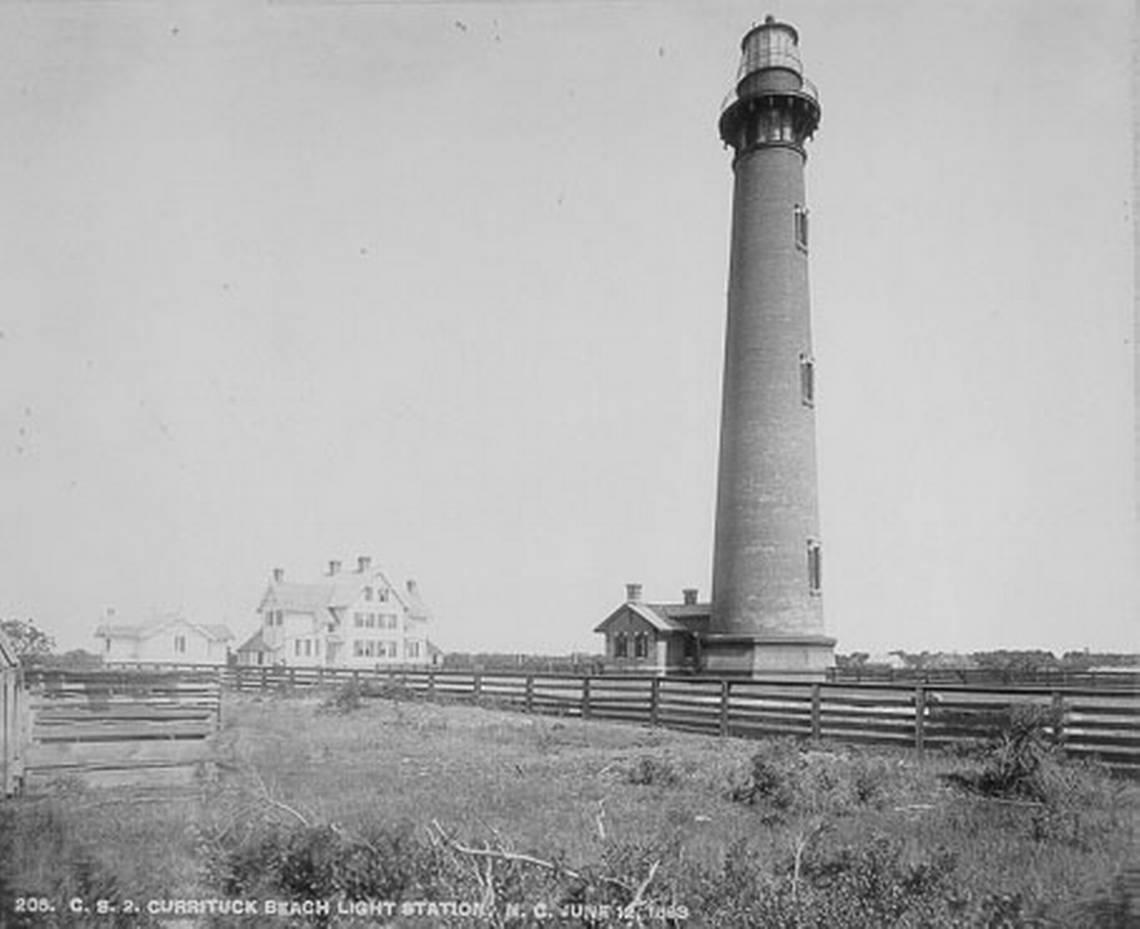
Currituck Beach Light Station
▪ Open for climbing, weather permitting, 9 a.m. to 5 p.m. through Nov. 30. The museum shop on site keeps the same hours.
▪ Address: 1101 Corolla Village Rd, Corolla, NC 27927
This lighthouse near Corolla was the last one built on the N.C. Outer Banks. It was illuminated in 1875 and is one of the taller lighthouses in the country at 162 feet.
It has a first-order Fresnel lens that the U.S. Coast Guard still operates as a navigational guide; the light comes on automatically at dusk and can be seen for 18 nautical miles. The lighthouse is owned by Outer Banks Conservationists, a non-profit that formed to save the keepers quarters on the property after decades of neglect.
Tickets to climb the light tower are $13 for ages 4 and up.
The Currituck light is distinguishable for its unpainted red brick facade.
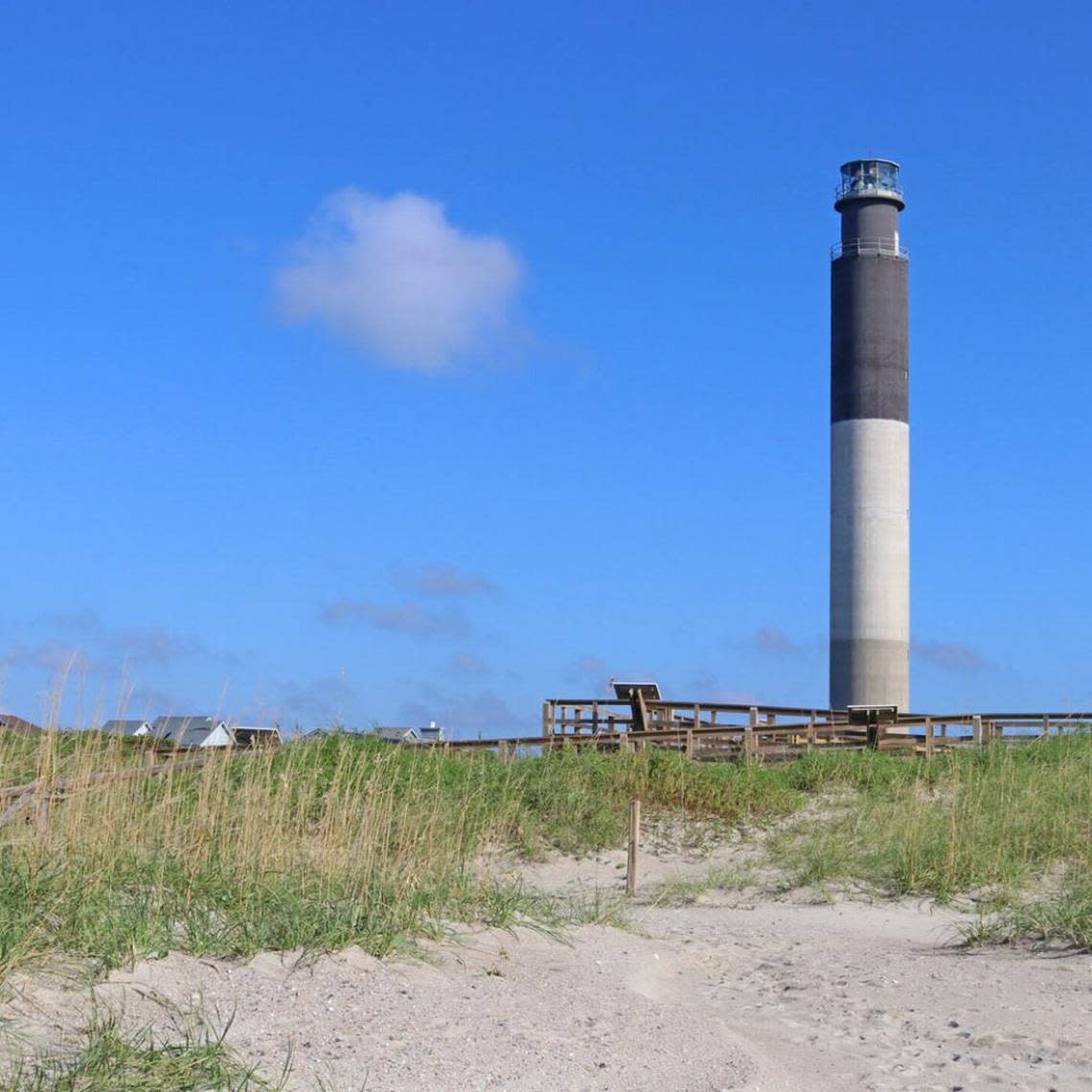
Oak Island Lighthouse
▪ Open for “top tours” year ‘round with reservations that can be made as much as six weeks in advance. Tours are available Wednesdays and Saturdays from October through April, and switch to Tuesdays, Thursdays and Sundays from May to the end of September.
▪ Address: 300A Caswell Beach Road, Caswell Beach, NC 28465
This is a relatively new lighthouse, built to 153 feet tall in 1958, when U.S. Marine helicopters were used to install the 11-foot-tall aluminum lantern housing.
Its lighting system was adapted from aircraft spotlights used in World War II, making Oak Island light the brightest in the U.S. when they were first turned on. A rotating LED light was installed in the tower in 2020, the first of its type in the U.S.
The lighthouse is now owned by the Town of Caswell Beach, though the U.S. Coast Guard operates the light as a navigational aid and volunteers from he non-profit Friends of Oak Island Lighthouse welcome visitors for tours.
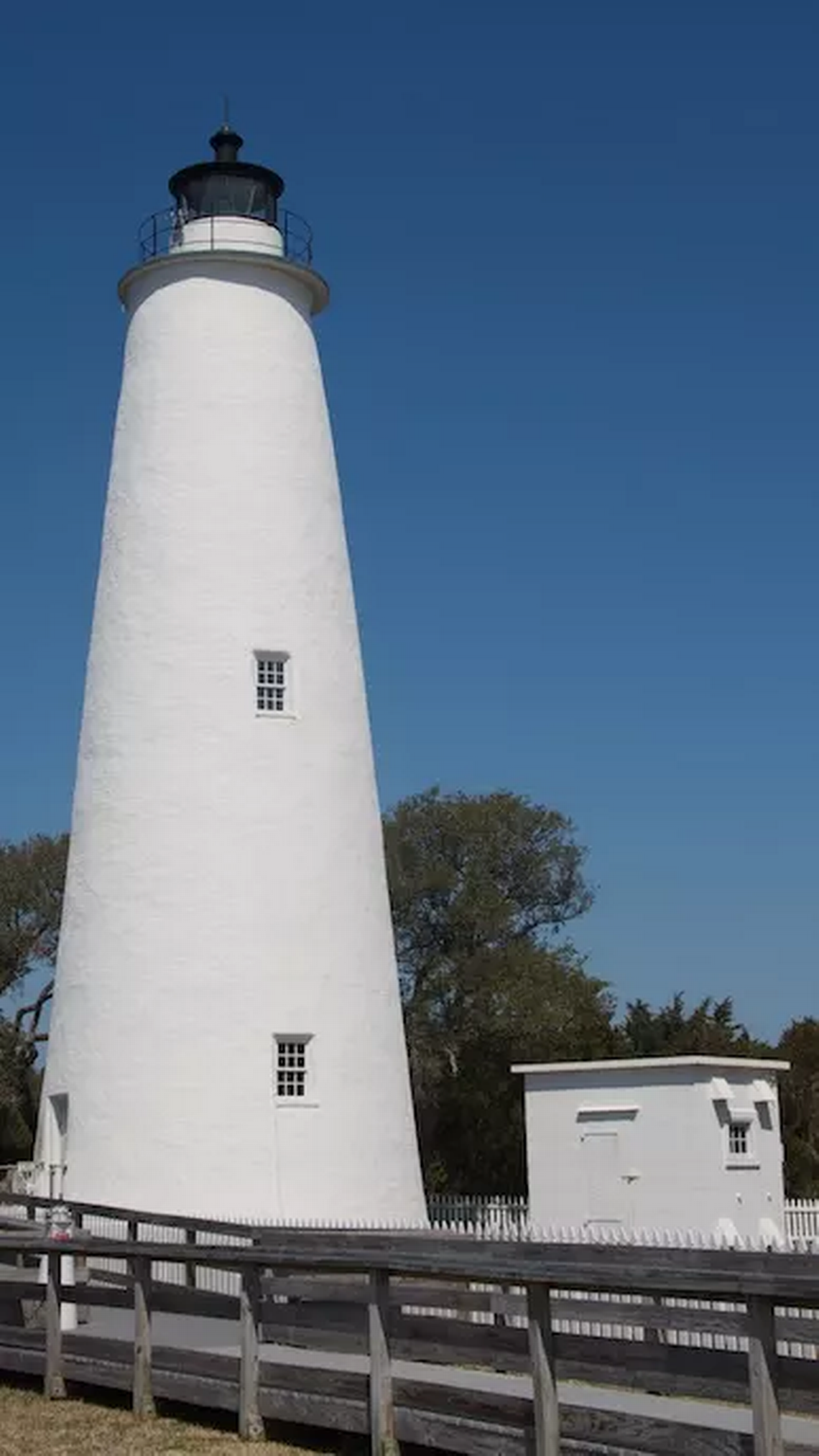
Ocracoke Light Station
▪ Closed to climbing since the last keeper left in the 1950s, but the base of the lighthouse is open with limited hours during the summer months, which are posted at from the Ocracoke Island Discovery Center (the former visitor center) in the village.
▪ Address: Lighthouse Road, Ocracoke, North Carolina 27960
This light was built in the early 1820s and first lit in 1824, making it the oldest operating lighthouse in the state, the National Park Service says. It was intended as a “secondary light” of the type used to mark bays and sounds, meaning they didn’t need to be as tall as coastal lights or have the same high-powered lenses.
The whitewashed conical-shaped lighthouse has walls that are 5 feet thick at the bottom and 2 feet thick at the top. It stands 75 feet tall.
The U.S. Coast Guard owns and operates the beacon itself as a navigational aid, though the National Park Service owns the tower, the original keepers’ quarters and other buildings, all of which were flooded during Hurricane Dorian in 2019. The Park Service just launched a 12-month project to elevate the keepers’ quarters more than 4 feet to prevent future flooding, and will put a visitor center in the first floor of the building when the work is done.